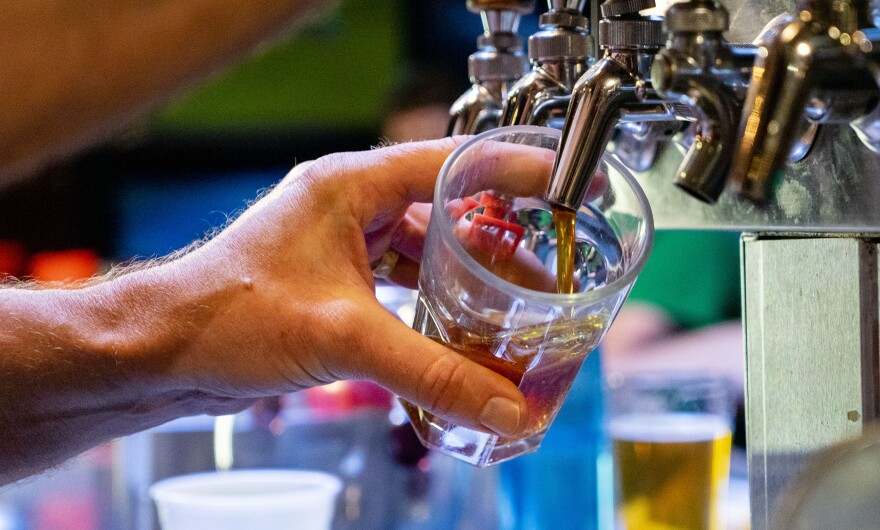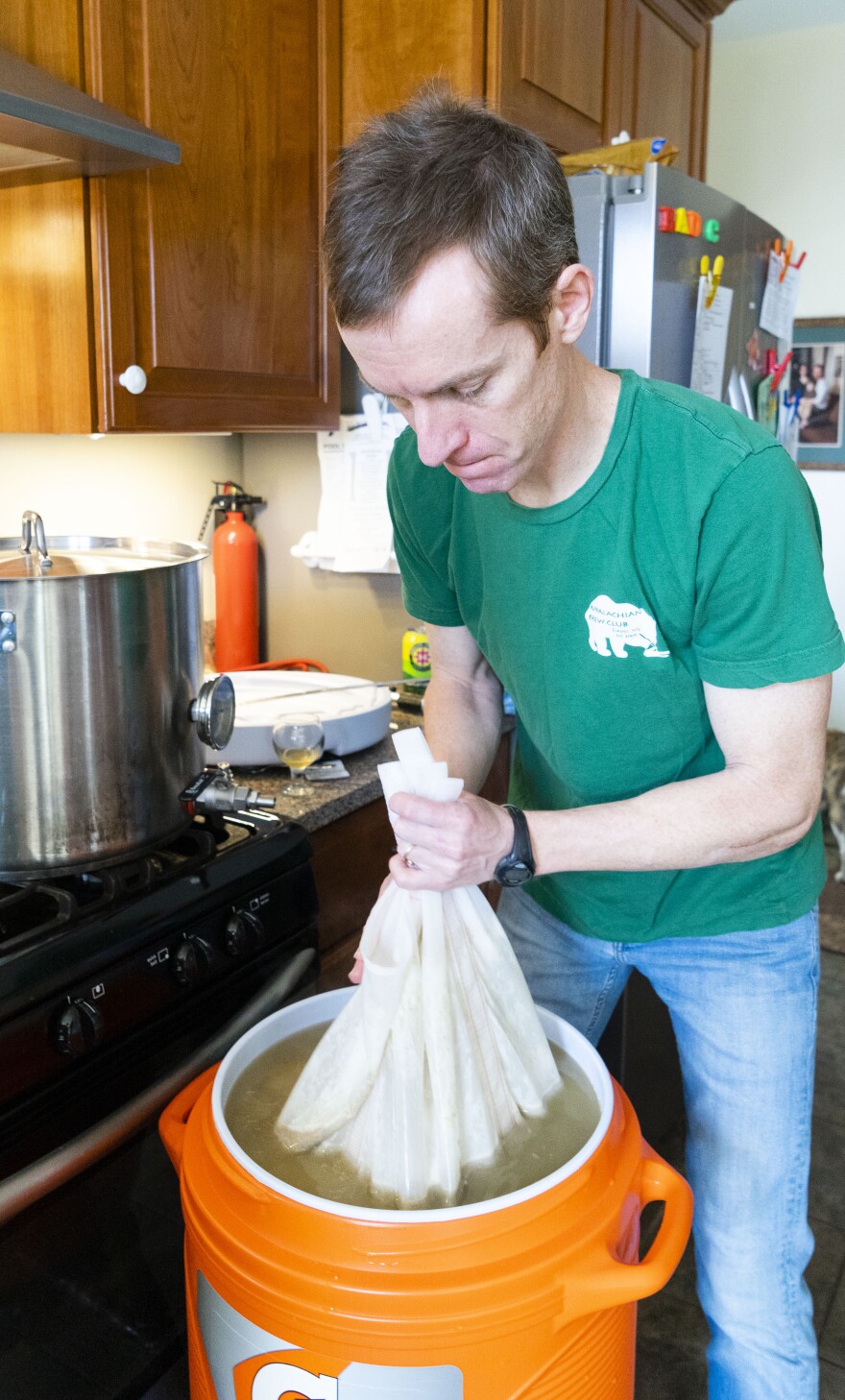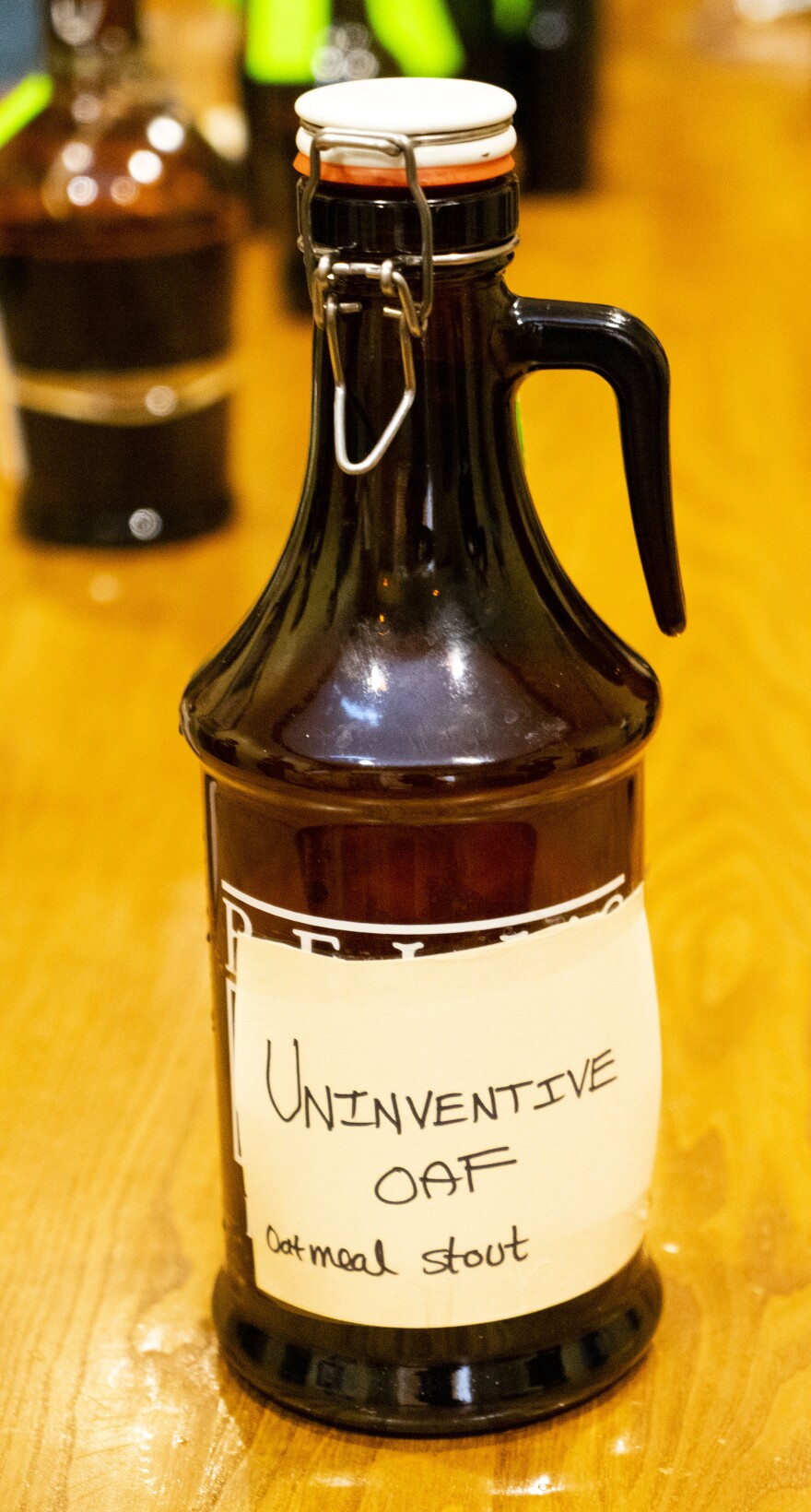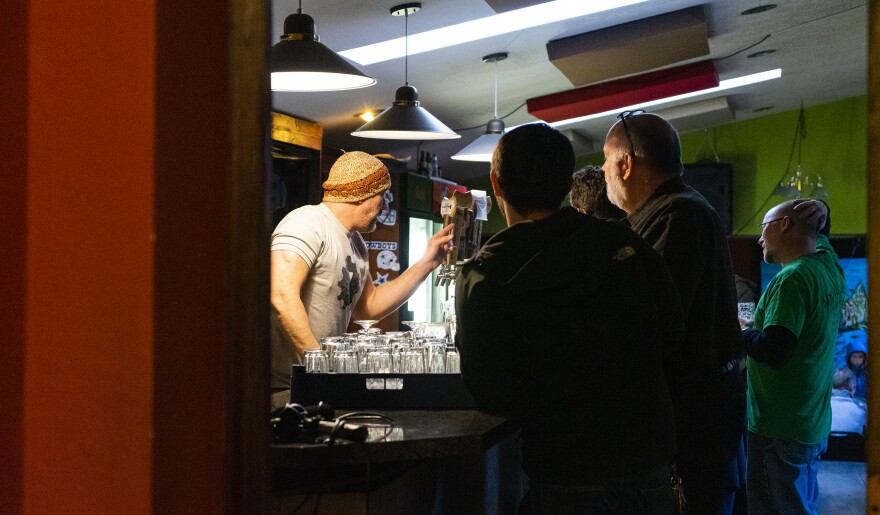Peanut butter stouts, guava sours, hazy double IPAs, pomegranate ales – these are just a few experimental beers to come out of the craft beer craze in recent years.
According to the National Brewer’s Association, this expanding industry started in the 1990s but didn’t gain momentum until 2010, making it relatively new. Today there are more than 7,000 commercial breweries in the country.
In West Virginia, that growth came even later. In the state there are 30 craft breweries, but in 2011 there were just five.
All the craft breweries started with a home brewer – someone who experiments in brewing at home, and usually it's a person who genuinely loves the science and craft behind beer.
Homebrewers in West Virginia have been experimenting with beer for decades, and they have been collaborating in community-organized home brew clubs.

There are 13 clubs in the state, one of which is in Elkins. It formed in 2009, and they call themselves the ‘Appalachian Brew Club.’
“When you’re around other brewers, you pick up learning how to brew in a really short time. It’s a super-fast starter for people,” Jack Tribble, Appalachian Brew Club co-founder, says.
He has been brewing since the 90s. He and several other members like to get together at one another’s homes to brew.
On this day, they have met up to brew a New England IPA.
DIY Beer
In the kitchen, the stove is covered in giant, stainless steel pots, and the counters are filled with different yeast strains and a variety of grains. There is an oversized Gatorade cooler nearby for pouring beer into, which allows the liquid to steep in the grains.

The room is filled with a distinct, yet polarizing smell. Jack gives his thoughts on the aromas.
“I think it has a sweet cereal smell that has a grainy backbone to it. It smells great,” he says.
But longtime club member Rick Newsome says it is an acquired scent.
“Brewers love the smell. Walk into a big brewery and they’re brewing a porter and it smells heavenly. Unless you’re my wife,” Newsome says.
While the club brews, they sample other regional beers.
A lot of people enjoy beer, but these guys love beer. For Rick Gauge, it is like a creative science.
“It’s a great bunch of people to hang out with and talk about beer and they, like me, nerd out about the specifics and the details and not just oh this tastes good, but why? What hops are used and what’s the malt bill like?” Gauge says.
There are six stages in the brewing process – milling, mashing, lautering, boiling, fermenting and conditioning.
The Elkins club is at the end of the mashing stage, where the enzymes from the grains are converting to sugar. At this point, it is not quite beer, but a sugary liquid called Wort.
They are trying to get the Wort to an exact temperature. Too hot or too cold and the beer changes type.
“How geeky do you want to be?,” Newsome says. “There are two enzymes that convert those starches into sugars - alpha amylase and beta amylase. Beta works in a range from 140 to 150 degrees. Alpha works from 150-160.”
In simpler terms, he is saying in order to convert the yeast to sugar the liquid needs to be between 140 and 160 degrees Fahrenheit.
As a club, they get together several times a year to brew, but they meet up once a month just to talk beer. Clinton Hamrick, one of the members, says home brewers tend to be on the cutting edge of new styles.
“The home brewers I think are a little more on the leading edge of what’s going to be popular this summer or the following year,” Clinton says.

It is a lifestyle. They even plan their vacations around beer, calling them “beercations.”
“We go with brewers and meet brewers over there and have a really good time, and all of a sudden they are pulling out stuff from the backs of their refrigerators and we have a really good time,” Jack says.
They also brew beers for competitions.
Homebrew Competitions
Homebrewers recently competed in a competition in Morgantown, called the Coal Cup Homebrewer’s Competition, which featured stouts and porters from regional homebrewers.
Inside the hotel conference room where the competition was held, judges quietly sip beers. They are voting on several categories – most boozy, coolest growler and weirdest flavor. In another room, memebers of the public gather to taste beers for the people’s choice competition.

Jason Croston, a homebrewer in the Morgantown club, is competing with a Christmas porter and Bourbon barrel porter. He says brewing beer is something that has been passed down in his family..
“My dad actually grew grapevines on the side of our house and used to make wine. And one of my grandfathers was a brewer way back. It’s in our family history and it’s in our blood,” he says.
There are two types of homebrewers – those who want to pursue opening a brewery and those who do not. Jason is the former. He hopes to open his own brewery one day, and even has a name picked out.
“I grew up in the backwaters in Cheat Lake, hence the name of my brewery when I do open --‘Backwaters Brewing,” Jason says.
But not all homebrewers want to take that path. Chris Eberlin from Cumberland, Maryland says brewers can lose their freedom with regulation. He gave an example of his friend who makes experimental beers.
“He’ll just grab roots off the ground and throw them in and maybe some bark off a tree, and sometimes you get duds and sometimes you get really good flavors,” Chris says. “The big challenge with commercial beer is you have to appease a big group of people. As a home brewer, I have the ability to go crazy because I’ve only brewed one to five gallons of beer. So I can make something horrendous and dump it and it’s only a little bit of time and money I wasted. But as a commercial brewer that could be the difference between life or death.”
All the home brewers spend the day tasting each other’s beers, waiting to hear how they placed in the competition.
Overall, the Appalachian Brew Club place second in the Coal Cup competition.

The Bar Crawl
Back in Elkins, the brewers club members go on a bar crawl to taste some of the local beers on tap. On this day, they start at a local restaurant and bar El Gran Sabor.
Clinton Hamrick tastes a new beer on tap.
“It tastes like figs, little bit of raisin, woody, sweet, slight caramel – it’s good,” he says.

Whether it is making their own beer, trying other beer or taking part in competitions, home brewers simply love beer. Unlike commercial brewers, these guys are not in it for the money. They cannot legally sell you a beer, but they will try to excite your palate.
“I genuinely believe there is a beer out there for everyone,” Rick Gauge says. “People who say they don’t like beer, I make it my personal mission to find them a beer they like. Beer can taste like anything. The people that say they don’t like beer just haven’t tried the right one.”

This story is part of an Inside Appalachiaepisodeexploring the alcohol culture and industry in Appalachia.












